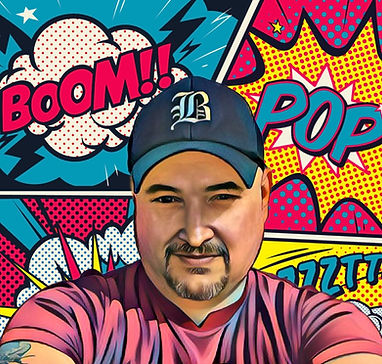
WELCOME to my BLOG ...."Summarizing Stahl"
Welcome to my corner of the world—where language comes alive, stories take shape, and inspiration is always within reach. As a longtime Language Arts teacher and passionate writer, I’m here to share lessons from the classroom, chapters from my own creative journey, and moments of meaning that connect us all. Whether you're a fellow educator, aspiring author, or curious soul, I’m glad you’re here.

My Brain: A Soup of
Soundbites and Sensory Overload
Okay, writers, let's talk inspiration. Where does it come from? For me, it's a multi-faceted process, a constant sifting and sorting through the detritus of everyday life. I've always told my students this, and I stand by it: inspiration is everywhere, you just have to know how to look (and listen!).
My first tactic is eavesdropping… well, not really eavesdropping. Let's call it "ambient listening." I'm not intentionally trying to pry into private conversations, but I'm hyper-aware of the snippets of dialogue that float around me. A snatch of argument on the bus, a child's nonsensical babble in the grocery store, a cashier's exasperated sigh – I soak it all up.
I keep a little notebook (physical, because I'm old-school like that) specifically for these overheard gems. Things like, "Well, that's a fine kettle of fish," or "He just stared at the wall like it owed him money." Seemingly insignificant phrases, right? But sometimes, buried in the ordinary, is the seed of something extraordinary. Sometimes a single, perfectly delivered line can spark a character's entire backstory. I might not know why someone is staring at the wall like it owes them money, but I bet I can invent a compelling reason!

MEMORY LANE: Do you stroll it while you write?
Little fragments are like puzzle pieces. Sometimes they fit together instantly to form a complete picture. Other times, they sit in my notebook for months, even years, waiting for the perfect context to emerge. It's like having a linguistic magpie's nest – full of shiny little treasures, just waiting to be incorporated into something bigger.
Beyond overheard conversations, my memories are a constant source of fuel. I constantly take trips down memory lane, revisiting both the joyous and the painful moments. That feeling of pure, unadulterated freedom I felt riding my bike down a hill as a kid? The crushing humiliation of messing up my lines in the school play? The quiet comfort of my grandmother's kitchen? All of it is fodder. I try not to shy away from the uncomfortable memories because often, the most powerful stories are born from pain, from loss, from confronting our vulnerabilities.
And then there's the visual aspect. I'm a highly visual person, and I rely heavily on color and imagery when I'm writing. If I'm writing a scene in a haunted house, I don't just think about it – I see it. I see the peeling wallpaper, stained with damp, and the sickly green glow of moonlight filtering through dusty windows. I imagine the oppressive darkness punctuated by flashes of crimson and bruised purple, reflecting the fear and unease of the characters. Color helps me paint a richer, more immersive picture for my readers.

MOVIE in my MIND
Above all else, and this is the single most important piece of advice I can offer, is to visualize. Before I even put pen to paper (or fingers to keyboard), I play the scene in my head like a movie. I see my characters interacting – their gestures, their expressions, the way their clothes hang on their bodies. I see the setting – the shifting shadows, the play of light and dark, the subtle details that bring the world to life.
Think of it as directing your internal blockbuster. You're not just writing words, you're crafting an experience. This mental "movie" is what allows me to capture the nuances of movement, emotion, and atmosphere that make a story truly resonate with the reader. It's what transforms a collection of words into a living, breathing world.
So, go out there and listen, remember, visualize, and most importantly, collect. Collect the funny, the sad, the strange. Collect the colors, the sounds, the smells. Collect the world around you, and let it fuel your imagination. You never know what treasures you might uncover. You never know what stories are waiting to be told.

When the Pencil Becomes a Sword Fight: Teaching My Son to Write
You’d think that being a Language Arts teacher for over two decades would prepare me to guide my 9-year-old son through a simple writing assignment. You’d be wrong. I had dreams of sitting together at the kitchen table, sipping iced tea, exchanging literary insights like a mini Hemingway and his slightly more caffeinated editor. Instead, I found myself negotiating with a pint-sized lawyer who argued that writing one paragraph about "what he did this weekend" was equivalent to climbing Mount Everest—barefoot, in the rain, with no snacks.
The assignment was clear. The resistance? Epic. He sharpened his pencil like a samurai preparing for battle, only to use it as a lightsaber five minutes later. I offered prompts. He countered with sighs, floor flops, and one lengthy discussion about whether our dog would be considered a reliable narrator. But somewhere between “I went to Grandpa’s” and “Can I be done now?”—we struck gold. A sentence. Then another. And finally, a full paragraph… complete with punctuation, a beginning, middle, and end, and yes, even some voice. Victory never tasted so sweet—mainly because it was immediately followed by ice cream. For both of us.
.jpeg)
Why The Woman In Me Left Me Wanting More
Don’t get me wrong—I genuinely enjoyed The Woman In Me. Britney’s early life and rise to fame were some of the most captivating parts of the book. Reading about her childhood, her family dynamics, and the whirlwind of her teen stardom felt like finally hearing the story behind the tabloid headlines we all grew up seeing. There’s no doubt that Britney has lived through things most of us couldn’t imagine, and I was rooting for her on every single page.
But as much as I appreciated the book, I couldn’t shake the feeling that something was missing. At times, it felt like her voice—the authentic, unfiltered Britney—was just out of reach. There were moments where I sensed she wanted to say more, particularly about the people and the industry that wronged her, but for whatever reason, she pulled back. I understand a ghostwriter helped craft the narrative, and I respect the collaborative nature of memoir writing, but I still believe writers—especially ones reclaiming their voice—shouldn't be silenced or softened. Whether it was legal constraints, emotional exhaustion, or pressure from the industry, I felt like the most powerful parts of her story were the ones she was still holding close to the chest.
That said, I still think The Woman In Me is an important and worthwhile read. It’s a raw, emotional account of a woman who’s spent most of her life fighting to be heard. I just can’t shake the belief that Britney has so much more to tell us—more truth, more pain, and maybe even more healing. Maybe one day, we’ll get that second book, one that’s fully and unapologetically her. And when that day comes, I’ll be the first in line to read it.
.jpeg)
Naming Characters: Or How I Accidentally Gave a Hero My Student’s Name
Coming up with first names for my book characters? Easy. Too easy. I realized quickly that my brain is a chaotic filing cabinet of names from years of teaching, favorite books, TV shows, and the occasional "name-that-baby" rabbit hole I fall down at 2 a.m. My protagonist might be named after a student who wrote the most beautiful essay on empathy I’ve ever read—while the villain? Let’s just say they might share a name with that kid who turned in blank tests but still asked if he could "bump his grade." I’ve shamelessly Frankensteined names from movie characters and gave them slight twists. Cora Jo? Part Southern belle, part sci-fi rebel queen. Bennett? A name that sounds both poetic and like he could fix your car. It’s a science, really.
Of course, I wait for the moment when a former student messages me and says, “Wait… is that character named after me?” Will I casually pretend like it’s just a coincidence and not that I stared at the seating chart for inspiration during writer’s block? There’s something strangely satisfying about giving life to names you’ve heard a thousand times in roll call and now seeing them face emotional collapse in chapter eight. Naming characters is the literary equivalent of casting your own movie—and yes, sometimes your old principal makes a cameo as the wise old sorcerer.
